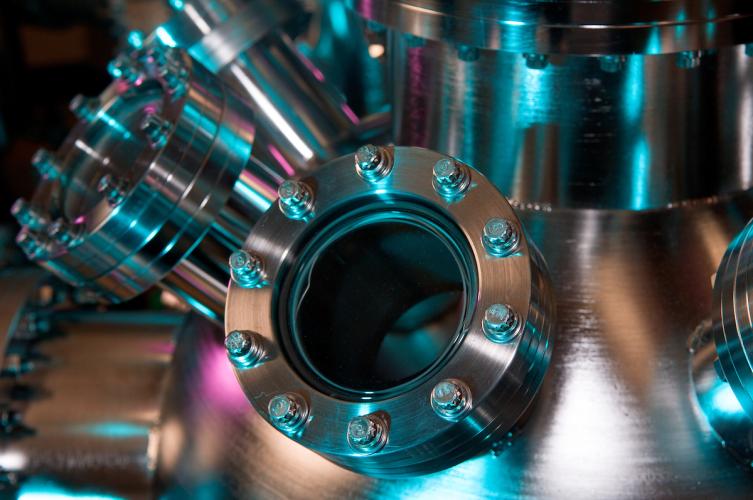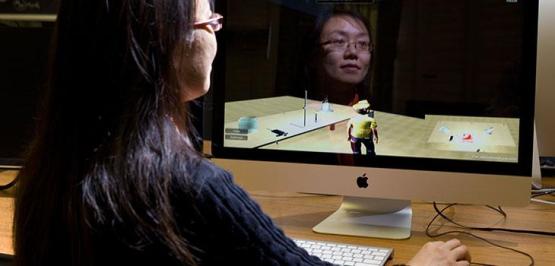
Russ College is ready for Digital Enterprise Collaboratory opening in Dayton

Great things are coming out of Dayton and Ohio University is at the center of it.
The Digital Transformation Center (DTC) is celebrating its one-year anniversary along with the grand opening of the Digital Enterprise Collaboratory (DEC). The DEC is a training, collaboration and innovation hub focused on rapid product development to enhance American manufacturing and increase military preparedness using digital tools and techniques.
Out of a need to correct the growing gap between weapons development and manufacturing in the U.S. and rival countries like China, the DEC will help grow a base of digital engineering knowledge and applications by educating a digitally savvy workforce, including the 81,000 jobs in the greater Dayton region that are directly tied to the mission of Wright Patterson Air Force Base (WPAFB). This capability will help attract companies from outside Ohio and satisfy the increasing needs of the Air Force and their regional supply chain. It will therefore shorten the design/ manufacture/ deploy cycle to field innovative products and reduce costs.
The DEC has support from the Air Force’s Digital Engineering Enterprise Office, the Air Force Research Lab (AFRL), the Materiel Command (AFMC), Life Cycle Management Center (LCMC) and other units.
As Ohio’s largest single-site employer with 38,000 employees, WPAFB will need much of its workforce to learn these new tools and techniques. It allows defense personnel, contractors, and academic teams to work together on digital engineering projects to foster innovation and knowledge exchange.
Congressman Michael Turner helped secure a $1.5M grant from the National institutes of Standards and Technology (NIST) and Senator Sherrod Brown helped secure a parallel $2M award from the Air Force Research Laboratory (AFRL). Combined, these funds have helped stand up a laboratory for collaboration (Collaboratory) in Dayton and a complimentary facility in Stocker Center on the main campus of Ohio University in Athens.

The Athens facility is focused on student design, modeling and augmented and virtual reality projects. Teams of students are building virtual models, conducting elemental analyses, and creating digital twins (a digital replica of a physical object, system or process).
Brock Klamfoth, a junior studying computer science, has built a physical animatronic parrot as well as a virtual model that emulates everything the robot does. The digital twin allows Klamfoth to model movements and verify that the programming is correct before sending the program to the physical device.
These sorts of activities can be very approachable for high school students interested in entering the field of engineering.
“They can look at these animatronics and understand this is a physical system that's being driven in real time by a digital twin,” said Neil Littell, associate professor of engineering technology and management and the lead on the Air Force and NIST grants.
So, then, Littell explained, the conversation becomes; “What if we were to do this in your plant? You have all this automation going on. What if we have a digital twin of your plant? What capabilities do you get from that?” You can program robots in a virtual space and not disrupt your production, and those capabilities are the kind of key capabilities that the Russ College of Engineering and Technology wants to showcase.
“There's this pent-up energy in our students around these cool technologies and I feel so grateful to be able to provide opportunities for them to explore and push the boundaries of what's possible. Because I know they're going to get amazing stories that they can use in job interviews and in the future,” Littell said.
The Dayton DEC officially opens Friday, Nov. 8. The Stocker DEC is open and operating.
“The DEC is a unique asset, and we are excited to provide it to the Dayton community. It brings together top-notch hardware and software together with an AR/VR demonstration studio,” Scott Miller, associate dean for industry partnerships said. “The facility will be used for training, collaboration, and problem-solving. The goal is to build a digitally savvy workforce capable of shortening the design/build cycle, improving quality, and reducing downtime. The facility on OHIO’s campus will allow our students and faculty to work alongside partners in the Dayton region and really leverage these digital technologies to the fullest.”
